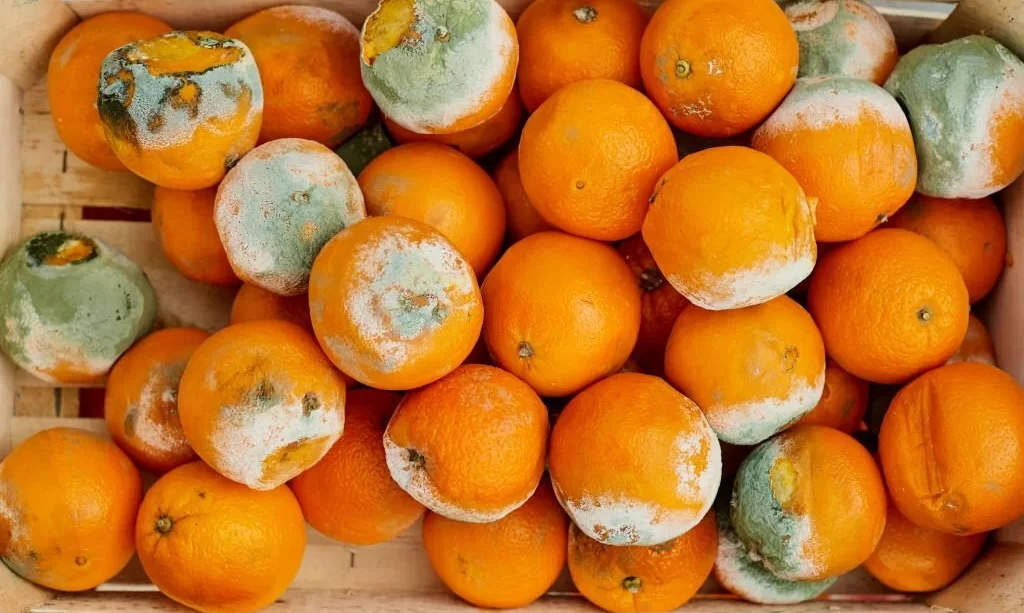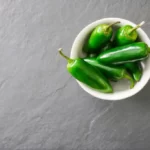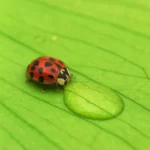Oranges, with their vibrant color and juicy sweetness, are a beloved citrus fruit enjoyed by many. But, like all good things, oranges also have a shelf life, and knowing how to recognize when an orange has passed its prime is a valuable skill for any citrus lover. This article is your guide to unraveling the mystery of spoiled oranges, helping you distinguish between a juicy gem and a past-its-prime fruit. We’ll explore the art of visual inspection, the role of aroma, and more, equipping you with the knowledge needed to ensure that each orange you enjoy is at the peak of freshness. Let’s dive into the world of citrus and learn how to tell if an orange is bad.
Visual Inspection
The journey to identifying a bad orange begins with a visual examination. Here’s what to look for when inspecting an orange:
Skin Color and Texture:
A fresh orange typically boasts a bright, vibrant color. As oranges age, the skin can change to a more faded or dull hue. Check for any discoloration, dark spots, or areas that appear shriveled or wrinkled. These signs can indicate that the orange is no longer at its best.
Mold or Unusual Spots:
One of the most obvious visual indicators of spoilage is mold. Examine the orange’s surface closely for any signs of mold growth. Mold can appear as fuzzy, dark spots on the skin, and its presence is a clear signal that the orange is no longer suitable for consumption.
General Appearance:
Assess the overall appearance of the orange. A fresh orange should look smooth and free from significant blemishes. If you notice any punctures, cuts, or areas that look damaged, this might be a sign of decay or pests.
A visual inspection is the first step in determining the freshness of an orange. By carefully observing the skin and its color, texture, and the presence of any mold or unusual spots, you can gain valuable insights into the orange’s condition.
Check the Smell
The aroma of an orange can provide valuable clues about its freshness. Follow these steps to evaluate an orange’s smell:
Fresh Citrus Fragrance:
A ripe and fresh orange should emit a pleasant and vibrant citrus aroma. When you bring it close to your nose, you should immediately notice this invigorating fragrance. If it smells like sweet, tangy citrus, it’s likely in good condition.
Off-Putting Odors:
If the orange gives off any unpleasant or musty smells, it’s a sign of spoilage. Off-putting odors may be a result of mold or other microbial growth. Trust your sense of smell; if it doesn’t smell right, it’s best to avoid consuming the orange.
The Sniff Test:
To assess the orange’s smell, gently press it to release some of its oils and fragrances. Then, take a moment to inhale the scent. This direct interaction can help you pick up on any undesirable odors more easily.
The smell test is an excellent way to gauge the freshness of an orange. Trust your sense of smell, and if the aroma is anything less than delightful, it may be time to say goodbye to that particular fruit.
Texture and Firmness
Assessing an orange’s texture and firmness is another essential step in determining its freshness:
Firmness:
When gently squeezing an orange, it should feel firm and slightly springy. A fresh orange has a taut, resilient texture. If the orange feels overly soft or mushy, it’s likely past its prime.
Consistency:
Run your fingers over the orange’s surface to check for consistency. Fresh oranges should have a smooth, uniform texture without any soft or mushy spots. Any areas that yield to pressure or feel squishy are signs of spoilage.
Indentations and Wrinkles:
Pay attention to any indentations or wrinkles on the orange’s skin. While slight imperfections are common, deep wrinkles or overly soft spots can indicate deterioration. These areas may also harbor mold or decay beneath the skin.
By examining the texture and firmness of an orange, you can gain valuable insights into its freshness. A firm, resilient texture indicates a good condition, while softness or inconsistencies may suggest spoilage.
Mold and Visual Defects
Mold and visible defects on the orange’s skin can be clear indicators of spoilage:
Mold Growth:
The presence of mold is one of the most apparent signs of a spoiled orange. Mold appears as fuzzy, dark spots or patches on the skin. If you see mold on an orange, it’s best to discard it entirely, as mold can extend beneath the surface.
Blemishes and Spots:
Examine the orange’s skin for blemishes and spots. Small blemishes can often be cut away, allowing you to salvage the rest of the fruit. However, be cautious when dealing with extensive or deep blemishes, as they may indicate internal spoilage.
Punctures and Damage:
Any punctures, cuts, or significant damage to the orange’s skin should be cause for concern. These openings can invite pests, mold, and bacteria, accelerating the orange’s deterioration. If the damage is extensive, it’s better to discard the orange.
Visual defects are significant clues to an orange’s condition. While minor blemishes may not necessarily render the entire fruit inedible, extensive mold growth, deep blemishes, or significant damage should prompt you to consider discarding the orange to avoid any health risks.
By paying attention to these visual and textural cues, you can make informed decisions about the freshness and suitability of the oranges you encounter.
Taste Test
A taste test is the final verdict on an orange’s freshness. Follow these steps to evaluate its taste:
Ideal Orange Flavor:
A fresh orange should burst with a sweet, tangy, and citrusy flavor. It should be juicy and enjoyable to eat, providing a delightful burst of citrus in every bite.
Off or Bitter Flavors:
If the orange tastes bitter, off, or has an unusual or unpleasant flavor, it’s a clear indication of spoilage. Spoiled oranges may develop a fermented or moldy taste, which is not suitable for consumption.
Texture Matters:
Pay attention to the texture as you chew. A fresh orange should be juicy and easy to bite into. Spoiled oranges may become overly dry, mealy, or mushy.
Conducting a taste test can help you confirm the freshness of an orange. If it tastes as sweet and citrusy as it should, it’s likely in good condition. However, any off or unpleasant flavors should signal that the orange is past its prime.
Consider Storage Conditions
The conditions in which oranges are stored can significantly impact their shelf life:
Temperature:
Oranges should be stored at a cool but not cold temperature. Room temperature is suitable for short-term storage. For longer storage, keep them in the refrigerator. Avoid exposing oranges to extreme heat or cold.
Humidity:
Oranges require a moderate level of humidity. In a dry environment, they may lose moisture and become dry, while excessive humidity can lead to mold growth. Store them in a location with balanced humidity levels.
Air Circulation:
Adequate air circulation is essential to prevent the development of mold. Avoid stacking oranges in a way that restricts airflow. Use open baskets or shelves that allow for proper ventilation.
Separation from Ethylene-Producing Foods:
Oranges are sensitive to ethylene gas, which is produced by certain fruits and vegetables. Keep them separate from ethylene-producing foods like apples and bananas to prevent premature ripening and spoilage.
Conclusion
In the quest to enjoy fresh and flavorful oranges, it’s crucial to master the art of recognizing the signs of spoilage. Whether you rely on visual cues, the aroma, texture, or a taste test, each method offers valuable insights into the orange’s condition. Combine these methods for a more comprehensive assessment, ensuring that the oranges you savor are at their peak of freshness.
Remember, reducing food waste starts with informed consumers who know when to enjoy their oranges and when it’s time to say goodbye to those that have seen better days. By following the guidelines provided in this article, you’ll not only enhance your culinary experience but also contribute to a more sustainable approach to enjoying this delightful citrus fruit. Happy eating, and here’s to savoring the juiciest, freshest oranges every time!



